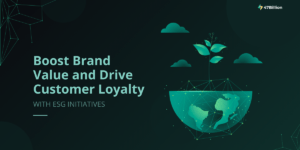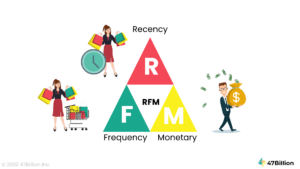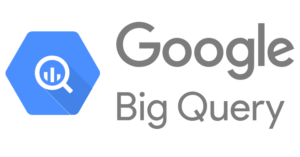Around 18,000 Employees of the New York City Department of Social Services used to process around 70,000 applications per month associated with the Supplement Nutrition Assistance Program (SNAP). Citizens who want to avail themselves of DSS services have to submit their applications at service centers.
With limited manual resources, DSS decided to automate the process by formulating a self-service portal having search capabilities built on NLP.
Now up to 75% of applications were submitted online and analyzing them based on various keywords resulted in more efficient processes.
Today government organizations can identify tax-evasion patterns, manipulate infrastructure data to target bridge inspections or health and social service data to prioritize claims for public welfare and support.
Be it a socialist or capitalist model, government organizations are seeking to become more efficient, effective, and deliver their mission in the least costly way possible. Such efficiencies can save money that can be shifted from supporting missions to doing missions. This has assembled added significance with the outbreak of pandemic where there is an intense focus on government-supported schemes for community tracing healthcare welfare and popping up the economy. With the increase in population and degradation of natural resources managing welfare programs becomes a necessity.
Challenges of the present day
There are several challenges associated with current business processes and systems-
- Since the data is dispersed, the key points through various welfare programs and initiatives cannot be co-related. There can be the same beneficiary for multiple programs, for example, disability and poverty and it is hard to track such cases.
- There is no high level aggregated view of funding and individuals availing them.
- There is no external data that is from ministries or global organizations co-related to internal data to gather new insights.
- Since small sets of data for any individual or entity is available in each IT system, there is no way to generate any machine learning model.
- Effective budget planning, fraud detection, optimization of service delivery – all can happen only coherent data is available and processed together in a central analytics platform.
- The insights are not present in a digitized format and cannot be utilized for future improvements in the system and processes.
A system-level approach for advanced analytic implementations
An integrated client-centric service delivery platform that provides all the individual data to a common data analytics platform and exposes insights derived from the analytics to various applications on the platform provides a very powerful tool. It can easily expand to add new data sources, provides 360-degree views of people and programs showing actionable insights on government, consumer portals, and also the development of new applications on top of these insights.
The key to extracting the full value of such a platform is –
- Identification of use cases and business process that will support it
- Determination of key points that define success
- Accumulating current, historical, new data sources needed for the implementation
- Defining insights
- Identifying and implementing changes to existing applications and new applications that use this information
- Rolling out these applications to become part of the identified process
- Measuring the effectiveness of the success criteria defined in point 2
- Reworking on points 3-6 till the success criteria are met
Accumulating data from multiple sources brings tremendous business value. By processing such data, cross-domain valuable insights can be obtained. For example, we can detect which beneficiary is receiving grants from more than one program, and then it can be flagged.
Major Applications of Advanced Analytics in the Public Sector
Social Welfare
Fraudulent claims cost the administration billions. AI-powered fraud detection enables the public sector to monitor corruption of the benefits and welfare programs by identifying different patterns in claims such as the same mobile number, beneficiary getting paid from multiple accounts, and processing social media accounts to confirm conflicting information provided by the applicants.
Healthcare
Real-time tracking can help in predictively preventing disease spread. ML algorithms can check patients with similar symptoms from different geographic locations, detect patterns, and provide red alerts at the time of outbreaks. Also, AI-powered tools can analyze patient data to predict patient risk scores so that doctors can treat them before situations are out of control.
Security
Identifying patterns in heat maps relevant to crimes happening in the regions of jurisdiction to forecast where and when crimes are most likely to occur. AI-based recommendations can help in identifying the presence of police headquarter and officers nearby.
ML algorithms help in analyzing images, videos and data recorded CCTV cameras. Facial recognition techniques enable governments to identify people from video records.
Education
Personalized education is one of the most important applications of ML. Education institutions analyze students’ performance and help in searching for inconsistencies between what is conveyed during lectures. Students receive immediate feedback on their writings through automated text analysis.
Public Relation and Engagement
Customer service chatbots have become the most common application of AI in the government sector. Chatbots acts as active support for common people and helps in answering FAQs, filling forms, assisting in registrations for services, etc.
Conclusion
Techniques like ML, deep learning, computer vision, speech recognition, and robotics when put to work can provide tangible benefits to the public sector. NLP extracts relevant information and enables analytics to find actionable insights. Failure rate predictions can help in predictive maintenance of military equipment, cyber anomaly detection can revolutionize cybersecurity strategies. Advanced analytic models can identify and predict negative outcomes such as health and safety challenges or compliance risks that would be overlooked by manual processes and predictions.
This helps in increasing financial benefit, improved operational efficiency, and increased faith in government. Also, it helps in managing economic and societal impact and sets the ethical and legislative frameworks for safe community infrastructure.







